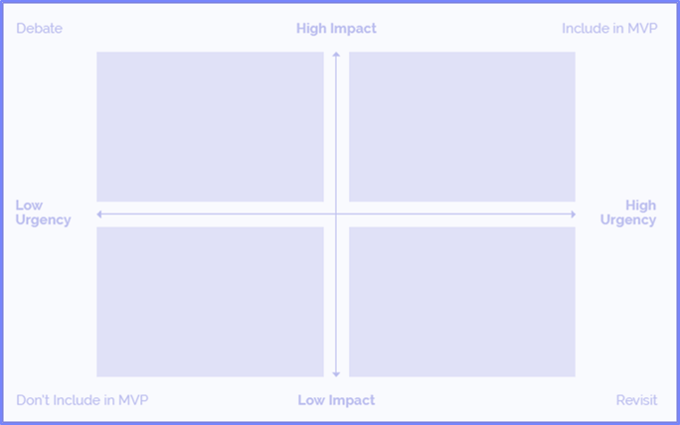Few things are more stressful than starting a new website project. Chances are you’ve invested a lot of money in working with a partner you don’t know and your fate is now in their hands. If you know anything about website development, you know that there will inevitably be bumps on the road. How you circumvent those bumps depends heavily on your planning beforehand. So planning out your installation is essential and the most surefire way to avoid the aforementioned stress – Installation Anxiety.
Take a Step back
If you as an organization have just decided to have a new website developed, you should take a step back and align views and expectations internally. It’s often the case that different parts of your business have diverging views of what’s possible and even different perspectives on your current situation. Certainly, how the CEO or Finance Director views things could be dramatically different from the views of a product line manager or merchandiser in your marketing team. They may also have very different perspectives on the level of difficulty and effort required to achieve a desirable outcome.
Essentially before you even get started on finalizing your requirements or creating a project plan, it can be useful to take a step back to assess how ready your organization is for digital transformation. To help with that, Optimizely has developed a very useful tool called the Digital Agility Model that can help you gain a clear view of where you are on the digital transformation journey and, perhaps more importantly, what the likely next steps are to moving forward. Your Optimizely Partner can help guide you through the process of creating your own Digital Agility Model for your organization. The result will allow you to have a clearer view of where you are at present and will provide detail on some of the steps you can choose to take to improve your situation.
Of equal importance is using this tool to communicate your current level of digital maturity as well as the logical next steps to reach higher goals with your broader organization. Having a realistic view of the present can go a long way to helping achieve your long-term objectives.
Walk, don’t run (at first)
The Digital Agility tool makes it easy to understand where you are on your digital transformation journey by identifying the steps as CRAWL, WALK, RUN and FLY to represent the different stages of digital agility.
CRAWL - Meeting basic customer experience expectations with limited technology.
WALK - Beginning to provide best-practice user experiences on older, siloed technologies.
RUN - Large investments in digital operations to achieve next-level customer experiences.
FLY - Highly responsive to changing customer experience innovations - A leader
Completing the Digital Agility Model process will help inform your project planning by helping you to understand that getting the basics in place first makes sense when building a longer-term digital strategy.
The Digital Agility model is a useful tool when it comes to educating the many areas of your business about realistic objectives for new technology. The CRAWL/WALK/RUN/FLY analogy can also help non-technical colleagues better understand the challenges and opportunities, while keeping everyone focused on what is achievable in the short term.
Set realistic objectives
So, if you are planning an Optimizely project, you have probably gone through the time-consuming vendor evaluation and selection process and you have a budget for something. Of course, your Board and exec team want to see something moving forward as quickly as possible and for it to stay within budget. So, no pressure.
By this time in the whole process, your brain may be overflowing with the challenge of remembering all the features of this fantastic software you now have access to. At the same time, you’re recognizing that everyone in your organization, from the Board and CEO down to the department heads, may have slightly different views on how this is all going to roll out and what, in the end, the benefits are going to be. Or perhaps you have done a fantastic job of prioritizing everyone’s needs against budget and timeframe and just need a way to communicate this to those internal and external partners who will be responsible for turning the vision into reality.
Whatever your situation, there are some common-sense approaches to setting realistic objectives that can help get things off to a good start and keep everything on track as your project progresses.
Establishing an MVP
When we begin working with clients on either a new platform implementation or a re-platforming, one of the first things we aim to do to help set realistic objectives is to develop and agree on the requirements for an MVP, or minimum viable product.
There are certainly a number of interpretations of this term. However, in the context of rolling out a new Optimizely project, what we mean by MVP is:
- Implementing the least number of features needed
- To satisfy the required minimum functionality for the business
- Within the allocated budget and required delivery timeframe
- All while building a strong foundation for future functionality and enhancement.
I think this last bullet is particularly important, since very few organizations are able to roll out every feature and function they have envisioned in the initial phase of a project. It can be overwhelming, both to your senses and to your budget.
Creating an MVP and the delivery framework around it can help you balance your requirements with your budget and timeframe. But how do we actually go about creating this MVP?

1. Identify and document the business needs
-
Determine the long-term goal of the project and make sure everyone understands it
-
Answer the question “Why are we doing this project?”
2. Identify and agree on the measurable success criteria that will indicate whether or not the project is successful
3. Find the opportunities
- Map out the user journey(s)
- Identify the users (actors)
- Identify the story ending (end goal)
- Identify all actions the user must take to meet that end goal
- Summarize the pains and gains into opportunity statements
4. Decide what features to build
- Use opportunity statements to finalize your features
- Provide a breakdown of the features to include in the product roadmap
- Use a prioritization matrix (or similar method) to prioritize features
Clarify business objectives
One thing I would like to emphasize is the importance of the executive sponsor providing clarity about the business and financial objectives of the project. These can include measurable goals for things like cost reduction, sales increases, improved customer satisfaction, investor/media awareness, etc. Whatever the goals, they should be crystal clear, because when it comes time to make trade-offs between time and budget, we will always refer back to the core objectives of the project. Additionally, if a particular feature or functionality doesn’t align with the bigger goal, it generally shouldn’t be included in the MVP.
Secondly, the product owner (or project manager) needs to have the authority to ensure there is adequate input from all stakeholders for the new platform. Different departments and individuals will have their views as to what is most important. While everyone’s views are valuable, they need to be filtered and prioritized to make sure they are aligned with the executive sponsor’s vision.
Lastly, for most projects, it is best to work with an experienced Optimizely partner who can support your project. They can provide you with an experienced business analyst and project manager to help with the process of refining what is to be included in the MVP. They can also help you develop the service delivery plan to create the schedule for the gathering of detailed requirements and technical development, testing and launch.
The end result will be a detailed project requirements document that prioritizes the most important features that can be delivered within the project timeframe and budget. The concept of an MVP goes hand-in-hand with an agile approach to collaboration and development. Consequently, understanding your project methodology and committing to it will be vital. More on that later.
It’s worth noting that when we organize a project by workstreams, these often also represent performance or payment milestones, so it becomes really important to hit the targets.
Assemble the right team
The next important topic is assembling the right team. This includes both internal and external resources. What external resources you might require will be determined by the nature of the project as well as what level of internal resources are available. All of these resources need to be informed and involved regarding the overall project plan and delivery dates in order to collaborate successfully.
Optimizely projects rarely exist in a vacuum. They are part of your overall digital and IT ecosystem and, as such, can involve many people, both inside your organization and outside.
A typical Optimizely Commerce project will require integration with numerous other systems and processes, including:
- ESB and other vendor middleware
- Google Analytics
- Google Tag Manager
- SEO
- DAM/Video streaming
- CRM
- Email marketing
- Marketing automation
- ERP
- PIM
- OMS/Inventory
- SSO
- Translation management
- Payment gateways
And that’s certainly not a complete list. So, it’s easy to see that there are many people who may need to have some level of involvement in helping to make your project a success. These include both internal and external resources, making good and timely communication essential.
To ensure good project governance, it is essential that there is senior-level participation in large projects. Getting execs involved from both your organization and the Epi partner is beneficial. They should get to know each other and have an open line of communication. For most large projects, we establish a steering committee that includes execs and senior delivery managers to view the project progress at a high level to make sure everything stays on track.
Agree on methodology and communication
Setting up channels of communication and agreeing on the frequency of collaboration is an important part of the onboarding process. Teams need to agree on a whole variety of topics, including:
Methodology
- Onboarding process- what and who will be included
- Agile methodology- Scrum or Kanban
- Sprint velocity
- Measurement and communication of completion
Tools
- Communication: Skype, Teams, Slack, Confluence
- Design collaboration: Invision, Figma, Zeplin
- Task management: Jira, Versionone
- Repositories: Github, Bitbucket
Scrum and Kanban are both agile development methodologies and, as such, have much in common, including:
- Both are agile
- Both limit WIP
- Both use “pull scheduling” from a backlog
- Both are focused on delivering the releasable software often and early
- Both use transparency to drive process improvement
- Both require breaking the work into pieces
- Both are based on self-organizing and cross-functional teams
- Both release according to a plan that is continuously optimized and based on the empirical data (lead time/velocity)
It’s also possible to combine certain aspects depending on the project and requirements. This is all part of the project planning process.
When choosing between Kanban or Scrum, the individual distinction doesn’t always have to be made
because Kanban and Scrum can go hand-in-hand.
In our practice and everyday work, we can say that we have good experience in both agile
methodologies (Kanban and Scrum), so let see the differences and benefits of using both methodologies.
When your team uses Scrum methodology, they have to work:
- In short iterations
- In a cross-functional team
- With product owner
- Under the counseling of Scrum Master
- With regular meetings
- With iteration planning
- With sprint reviews
Last (but most certainly not least), there needs to be an agreed escalation process. As mentioned, there are almost inevitable bumps in the road and it should be agreed in advance how these will be escalated if the need arises.
Conclusion
Let’s sum up. We’ve looked at a number of aspects of managing an Optimizely project, including:
- Assessing your digital agility and readiness
- Establishing an MVP
- Building the right team
- Deciding on project methodology and communication
Although all of these are important aspects of planning a successful project, it is also true that every situation will be different and it pays to take the time to make sure you’ve tweaked them to fit your unique requirements. In the end, the right planning and the clear communication of objectives count. On that foundation, you can:
- Achieve your project’s go-live within timeframe and budget
- Achieve some quick “wins” to keep everyone enthusiastic about the platform and project
- Gain a thorough understanding of the capabilities of the new Optimizely platform before investing time and effort on extending its features and functions
- Allow the system users to stay in alignment with the overall goals of the organization and stakeholders
Here at Niteco, we know how to handle complex installations and support our clients in all these steps. We’re of the opinion that careful planning and clear communication are essential for achieving your business objectives. Contact us now to find out how we can help with your installation anxiety.
to transform your business and drive results?



